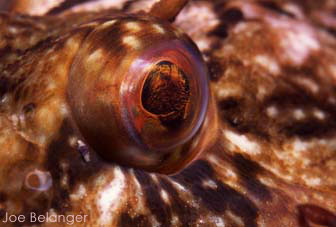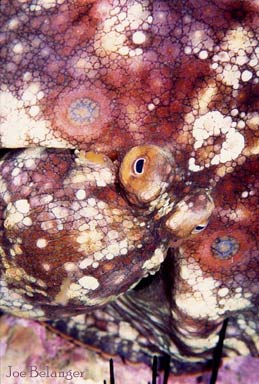Photographed at Long Point, Catalina Island using a
housed Nikon F-2, 55 mm lens, and a single Ikelite Substrobe Ai.
This juvenile garibaldi was about one foot from my lens.
About
the Garibaldi: These pesky little guys are a bold animal, and are
afraid of no man. They are a protected species and I honestly
believe they know that. Garibaldi get in your way, and often ruin
photographs as they swim lazily through the photographic area. You
can punch and poke at them and they will turn around and simply
stick their tongues out at you. Juveniles have wild blue coloration
when young and lose it as they get older. They range in size
to 14 inches and are found from northern California to Baja, Mexico
California. They are reef residents and are commonly found around
kelpbeds. Juveniles are orange with iridescent blue spots, and are
shy.




